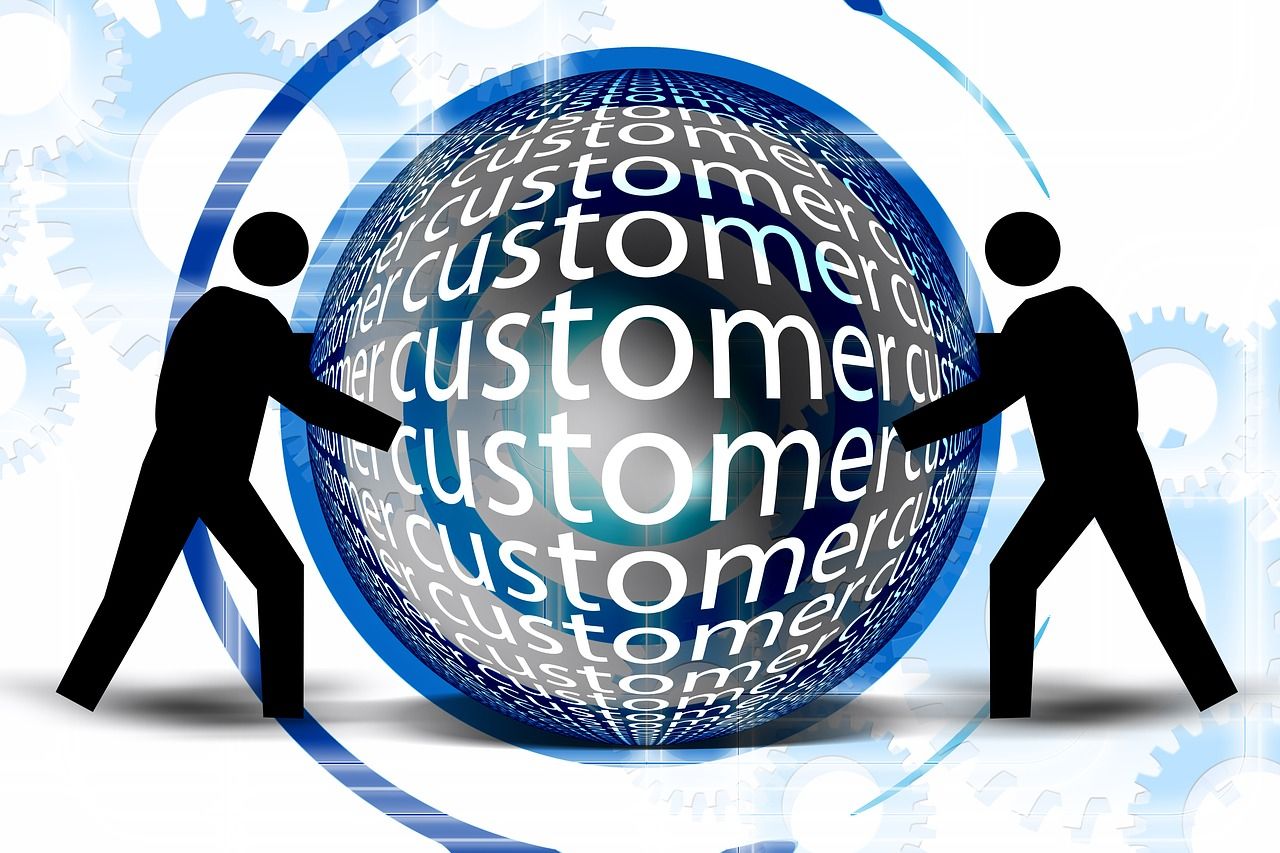Being a customer service agent is not an easy occupation. Unfortunately, you are expected to deal with inconvenient situations to protect your company’s brand. The question that most often arises in the customer service industry is how to respond to angry customers? They are the most dangerous type of customers that can cost you a ruined reputation if you don’t deal with them properly.
As your company’s prestige is on the line, you may consider having training for your agents where you can present your company’s techniques for outstanding customer support. Having a document that outlines your company’s rules on how to respond to customers can guarantee you a response standard. It will help you keep your customers satisfied regardless of any problems that come up.
This article can help you build that standard by providing psychological profiles of potential problem customers and giving tips on the best ways to overcome them.
A. The Breakdown- Customer Profiling
During a customer service agent’s career, there are certain customer types and issues that you can encounter. Luckily, now you can consult this customer profiling guide to minimize stress and get the best possible results.

1. Legitimate Complainer
It’s a fact of life: mistakes happen. There is no perfect human or action. However, the key here is how you approach the problem and resolve it. There will be a time when a customer comes with a completely legitimate claim due to your company’s failure. It can be a situation where the problem affected the customer's life significantly causing uncertainty and issues for them.
For this call, most often even the best inbound support agents aren’t prepared. If that’s the case, these customers can always be passed to the customer service manager or someone in a higher position.
If the customer decides to share their experience on social media you may deal with an avalanche of similar complaints. Be ready for it!
2. The Offloader Personality
This may be the worst type of caller. They don’t have any issues with a company. The reason why they are calling is of a personal nature and they don’t have anywhere else to vent it. Even though their grievance may not be legitimate and their problem may not be real, they are still your customer. Therefore, it is still necessary to reply to these kinds of requests professionally as well.
3. Obvious Abuser
The most inconvenient calls are certainly those from abusive customers. This interesting specimen won’t hesitate to yell at you or express explicit profanity. It might sound paradoxical, but this type of customer is one of the most desired among customer support agents. You probably wonder why and how to respond to angry customers that fall under this type?
Agents are protected from insults and violent customers. Every time this unfortunate incident happens, they are expected to keep calm and warn the customer three times before they end the call. These calls can be the quickest ones, so don’t let this type of customer shake you up. As usual, you are always just doing your job.
4. Threat-Oriented Customer
While the abusive customer will aim to insult you, the threat-maker’s goal will be to intimidate you with various threats that are certainly unpleasant to hear. However, these threats typically have no bearing on reality and are just a way for the customer to vent their anger. With this kind of customer, it’s important to stick to your guns. Never let down your guard, but try to never lose a customer, too. Maybe this kind of behavior is temporary, which is most often the case, and they will treat you with more respect on the next call.
5. Offended Type
Well, for this type, customer representatives can be guilty. Sometimes a customer can get offended during an interaction with an agent (and customer service reps can certainly get offended too). The cause can be misinformation from the agent and subsequent frustration on the customer's side. The good news is that you have the most control over these kinds of situations. Therefore, make sure to respond to the customer’s complaints according to your company’s policy, or provide specific polite solutions that can’t offend anyone.
B. Top Tips On How To Respond To Angry Customers

1. Stay Calm
The golden rule of excellent customer support is to remain calm no matter what. This is especially important when an angry customer is on the other side of a phone call. Although they may annoy you with their high-pitched voices or rude language, your job is to create a positive outcome for any given set of circumstances, even when it is really hard not to yell back.
2. Apologize With Grace
Whether a complaint is legitimate shouldn’t concern you that much. In the end, all the callers are customers and you need to answer with respect. Try to neutralize any kind of dispute and minimize damage. You should always aim to apologize gracefully and welcome them with kindness.
Here are specific answers that are suitable for each of the customer profiles we discussed above:
- For the Offloader:
-“I’m so sorry that you feel this way, Mrs. Smith…”
-“May I suggest that…?”
-“As a solution,..”
- Responses for legitimate complainer:
-“Thank you so much for letting us know about this, Sir/Ma’am”
-“I completely understand how you feel, Sir/Ma’am”
-“I’m so sorry to hear about this, Mrs. Smith…”
- Dealing with the abusive caller:
-“You seem very upset, Mrs. Smith. Would you prefer to continue this conversation through email or mail?”
-I’m going to do my very best to help you, Mrs. Smith…”
-I truly understand your concern, Sir/Ma’am, but unfortunately, we cannot tolerate the kind of language you are using right now…”
- Responses for theThreat-Maker:
“I do understand the inconvenience you’ve faced, Sir/Ma’am”
“Let me see how I can fix this, Mrs. Braff…”
“I recommend that you (insert action here), Sir/Ma’am, so that I can take further action without delay.”
- Solutions for offended customer type:
-“Thank you so much for your patience/understanding, Mrs. Braff…”
-“I will take care of this for you right away…”
-“I’m sorry you’re so upset, Sir/Ma’am. Would you like for us to call you back when you feel a little calmer?”
These tips will be of great use in critical situations!
3. Claims Are Not Personal
Remember to never take any claim personally! The customers are not angry with you, they just experienced issues with your company’s product or service. Because you represent the company, you are the one who needs to listen to the customer’s troubles and react quickly. Always keep in mind that the human brain is programmed to react defensively. Therefore, you need to be twice as careful about what you are going to say.
4. Empathize & Sympathize
After you have apologized for the customer’s inconvenience and listened to the problem from an objective point of view, you are now ready to take the next steps for delivering superb customer service. First, try to empathize. To respond to angry customers with quality you need to comprehend what they are going through.
The best way to do it is to imagine yourself in their situation. How would you feel? What would you expect as an answer? These are some of the questions that can help you feel empathy. This state of mind makes finding solutions to their problems a piece of cake.
After customers have had a bit of vent time for themselves and you have reached a satisfactory level of empathy, shift to sympathy. Now you can respond to angry customers relying on what you have learned in the reflection process. By following this strategy you will increase your chances of getting a 5-star review significantly and also create a strong relationship with your customer.
5. Stick To The PIA Principle
The winning formula for fantastic customer experience is certainly a PIA principle:
This principle stands for:
- P – Power words such as “oh” or ”oh my” used as a reaction to customers’ emotions
- I – “I statement” that helps you relate to the customer’s situation
- A – Assurance that you will deliver a solution
Here’s an example of putting a PIA statement to work: “Oh my, I can only imagine what you have been through… Let me pull up your account. I can definitely check available options for you.”
6. Specific Words That Work
Even though every customer issue is unique, there are certain words that can apply to any customer service situation.
Add to your customer support guide words such as:
- Yes: You need to say yes to confirm that you’ve understood your customer’s problem. They expect the solution, not the explanation that you can’t do something.
- Definitely: This word helps incredibly with difficult situations and removes doubt and uncertainty of the solution.
- Understanding: By expressing understanding, you show that you are working toward resolving the issue, something irate customers especially like to hear.
- Currently: Here you are confirming that you are aiming to deliver an immediate answer to their question.
- Feedback: None of us want to feel like we are an angry complainer. Soften your language by referring to a customer’s complaint as “feedback” and promise to pass it along to the managerial team.
- Suggestion: Avoid patronizing customers. After all, nobody likes to feel talked down to. Rather than give orders, always phrase your solutions as suggestions or advice. Make sure that you don’t use a condescending tone.
7. Deliver Solutions
In the end, all your efforts will be in vain if you can’t offer a solution. When you’ve established a friendly atmosphere and understood the customer’s needs, ask them what they would like to achieve with the claim. You can try to give them what they want, or suggest contacting the manager if you can’t provide a satisfactory solution. However, you should always use your knowledge and experience to find a solution that is best for everyone: you, the angry customer, and your company.